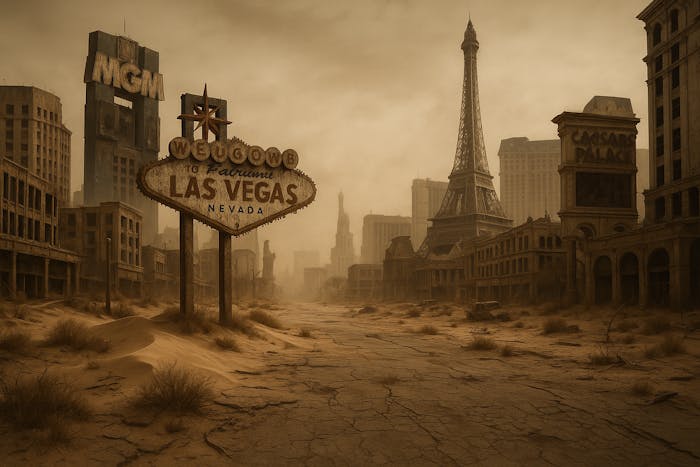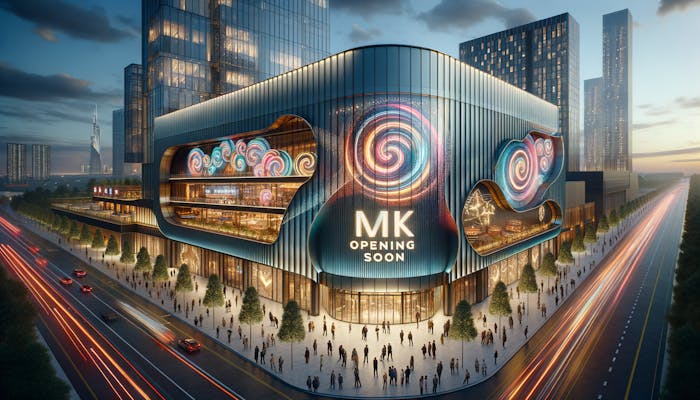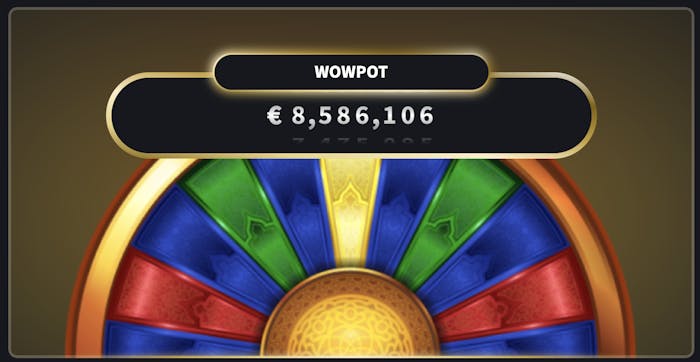Las Vegas Tourism in Decline: The End of an Era for Sin City?


Las Vegas, once synonymous with affordable thrills and endless entertainment, is facing its most significant tourism crisis in recent memory. The city has experienced consecutive monthly declines in visitor numbers throughout 2025, with June marking an alarming 11.3% year-on-year drop to just 3.1 million visitors compared to 3.5 million the previous year. What was once America's playground for the masses is increasingly being described by visitors and locals alike as resembling a "ghost town".
Key Takeaways: Las Vegas Tourism Decline
Las Vegas Numbers Paint a Stark Picture
The financial impact of this decline is substantial and far-reaching. Las Vegas Strip gaming revenue has fallen for five consecutive months, with November 2024 recording a 4% decline to $788.7 million. The fiscal year 2025 data shows the Strip is down 3.3% overall, marking what could be the first post-COVID revenue decline for the entertainment capital.
Hotel occupancy rates have plummeted to 66.7% in early July 2025, while international visitor arrivals dropped by over 13% in June alone. Even more concerning, traffic on Interstate 15 at the California-Nevada border decreased by 4.3%, suggesting fewer Californians (representing 30% of all Las Vegas visitors) are making the journey to Sin City.
How Vegas Priced Out Middle America
The most frequently cited reason for the tourism decline is the city's dramatic shift toward premium pricing. Anthony Curtis, publisher of the Las Vegas Advisor, captures the sentiment perfectly: "On the Strip, people get taken for a ride. Once they get here, they're like, 'I'm tired of being treated like this. I'm tired of having to pay these ridiculous prices'".
The evidence of this pricing crisis is everywhere. Visitors report paying $40 for two coffees and two croissants, $33 for bagels, and $26 for bottles of water. One British visitor was charged $74.31 for two drinks at the Sphere, while another faced a $26 charge for a single bottle of Fiji water at the Aria Resort & Casino.
Resort fees, parking charges, and hidden costs have become the norm across virtually every Strip property. As one Reddit user lamented: "Previously, free parking was common, and during my last visit, there were still some hotels that didn't charge resort fees. Now, room prices have skyrocketed to two or three times what they once were, and I'm also faced with extra expenses for parking and fees that add up to hundreds of dollars".
A Perfect Storm of Factors
While pricing remains the primary driver of Las Vegas's tourism decline, several interconnected forces have converged to create an unprecedented crisis for Sin City. The current downturn represents more than just economic pressures. It also reflects fundamental shifts in American politics, generational preferences, and environmental realities that threaten the very foundations of the Las Vegas entertainment model.
The "Trump Slump" and International Decline
The tourism decline coincides with what industry insiders call the "Trump slump". Immigration policies, tariffs, and strained international relations have created a hostile environment for foreign visitors. Tourism from Canada, Nevada's most significant global market, has dropped from a substantial influx to a "mere trickle".
Senator Jacky Rosen has highlighted an anticipated 8% reduction in international visits, partially due to travel deterrents such as stringent immigration policies. The World Travel and Tourism Council projects that the U.S. will lose $12.5 billion in international travel spending in 2025.
Generational Gaming Preferences
Millennials and Gen Z, who represent nearly half of Las Vegas visitors, are fundamentally changing how the city operates. These younger generations spend significantly less on gambling compared to previous cohorts. Millennials average $768 on gambling and $637 on dining, while Gen Z spends $575 and $541, respectively. In contrast, Generation X spent $873 on gambling.
The rise of online gambling across more than half of U.S. states has eliminated the need for many Americans to travel to Nevada for their gaming fix. As one industry executive noted: "People aren't coming to Las Vegas to gamble anymore. They are gambling when they're in Las Vegas".
Environmental and Infrastructure Concerns
Las Vegas faces a significant water crisis due to decreasing water levels in Lake Mead. The city's 45 golf courses, used by one-third of all visitors, could see sharp declines due to rising temperatures and water supply constraints. Climate change threatens not just the city's infrastructure but its very appeal as a desert oasis.
The Social Media Echo Chamber
The decline has been amplified by viral social media content showing empty Strip walkways and deserted casino floors. YouTube influencers and TikTok creators have created dozens of videos proclaiming the "end of Las Vegas", though some critics argue these represent selective editing rather than comprehensive reality.
Rideshare drivers, who interact daily with tourists, report noticeable declines in foot traffic along The Strip and Fremont Street. Local casino workers describe the transformation as dramatic, with many reporting unusually empty corridors and quiet gaming floors during traditionally busy periods.
Industry Response and Adaptation
Casino operators are scrambling to adapt to these new realities. Properties are investing heavily in non-gaming amenities, including nightclubs, celebrity chef restaurants, wellness offerings, and Instagram-worthy experiences. Jonathan Jossel, CEO of the Plaza hotel-casino, emphasises that "It's really events that differentiate us from other places".
However, some industry veterans warn that the focus on high-end experiences is alienating the middle-market customers who built Las Vegas. As one Reddit user observed: "They broke the compact with the common man". The city's average visitor income has risen to $93,000, effectively pricing out budget-conscious travellers.
What the Future Holds for Las Vegas
Despite the challenges, not all indicators point to doom. Downtown Las Vegas saw an 11.6% revenue increase, and convention attendance rose by 10%, suggesting business travel remains robust. Some off-Strip properties, such as Red Rock Resorts, reported record quarterly revenues.
The key question is whether Las Vegas can find a balance between its luxury aspirations and its historical role as an accessible entertainment destination. As the city continues to lose its middle-market appeal, it risks becoming what critics describe as a playground only for the wealthy, abandoning the democratic entertainment ethos that made it an American icon.
The viral videos showing empty streets may be exaggerated, but they reflect a more profound truth: Las Vegas is transforming in ways that may fundamentally alter its identity. Whether this represents a temporary adjustment or the beginning of a permanent decline remains to be seen. Still, one thing is sure. The Las Vegas of $2 steak dinners and free parking is now just a memory in the desert heat.
Comments
Comment Submitted for Review
Just now
Your comment has been submitted for moderator review. It will be posted shortly once approved
Latest News

Craig Hitchings is a Senior Writer and Editor at GamblingAuthority. He has more than 15 years of experience in the iGaming industry and has great knowledge of the online casino market within the United Kingdom.
Read more about the author






